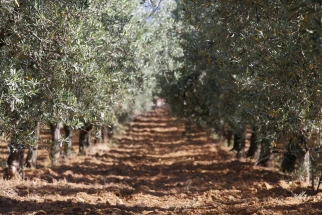-(groot).png&resolution=720x0&quality=95)
What is the difference between
White & Red wine
There are countless different wines in existence. These differences arise from the characteristics of the grape, the soil, and the climate, but also from the choices of the winemaker. To understand the differences between wines, it's important to have some knowledge of the winemaking process. Let's start with the most obvious difference: why is wine white or red? Is this dependent on the color of the grape? Not exactly, as the color of the grape doesn't determine the color of the wine. Wine color arises from the production process, and this process also creates the unique taste distinctions between red and white wine. And while it's sometimes claimed that you can't even taste the difference between red and white when they're both chilled, the fundamental characteristics are indeed different... and you can definitely taste that.
In the Vineyard
The wine production process begins in the vineyard, where careful grape selection and harvesting are crucial. For red wine, grapes are typically picked at the peak of ripeness when sugar levels and tannins are optimal. On the other hand, grapes for white wine are often harvested slightly earlier to ensure higher acidity and freshness in the final wine.


Destemming and Pressing
After the grapes are harvested, they are prepared for the next phase of the process. For red wine, grapes are often destemmed and then crushed, keeping the skins and juice together during fermentation. When the juice is in contact with the skins, it's called maceration.
For white wine, grapes are usually pressed immediately to separate the juice from the skins, minimizing contact with the skin to prevent color change. However, this is not always the case, as sometimes winemakers choose to allow brief (and chilled) maceration to create a more complex flavor profile. This is the case, for example, with Cantine Viola's Biancomargherita.
Fermentation
This is the point where the difference between white and red wine truly stands out. In red wine, fermentation occurs with the skins and seeds, giving the wine its characteristic color, flavor, and tannins. The skins often remain in contact with the juice for several days to weeks, depending on the desired style. In the production of white wine, fermentation takes place without the skins, resulting in a clear color and a lighter body.
During fermentation, the sugars in the grape are converted into alcohol, a process known as wine fermentation.


Aging
After fermentation, both red and white wines often undergo an aging process to further develop their flavors. For red wine, this aging process can be lengthy, with the wine being stored in oak barrels to develop tannins and complexity. White wine also undergoes aging, but it may be shorter and often takes place in stainless steel tanks to preserve freshness.
Filtering and Bottling
Before wine is bottled, it often goes through a filtering process to remove impurities. For red wine, this can help remove any sediments that may have formed during the extended fermentation and aging. White wine is generally bottled more quickly and has less chance of sediment.


Infinite Possibilities
While the actual difference between red and white wine comes from whether or not the skins and seeds are removed during fermentation, there are many other choices made by the winemaker that lead to different characteristics of white and red wines. Red wine is characterized by its deep color, tannins, and complexity, while white wine is known for its fresh acidity and fruity aromas. Within these two main categories, there are endless possibilities for winemakers to explore. It's precisely this variety that makes wine so special.


.jpg?resolution=1024x340&type=webp&quality=90)
.png?resolution=322x0&quality=90&type=webp&background=FFFFFFFF&force_jpg_crop=1)
.jpg?resolution=322x0&quality=90&type=webp&background=FFFFFFFF&force_jpg_crop=1)
